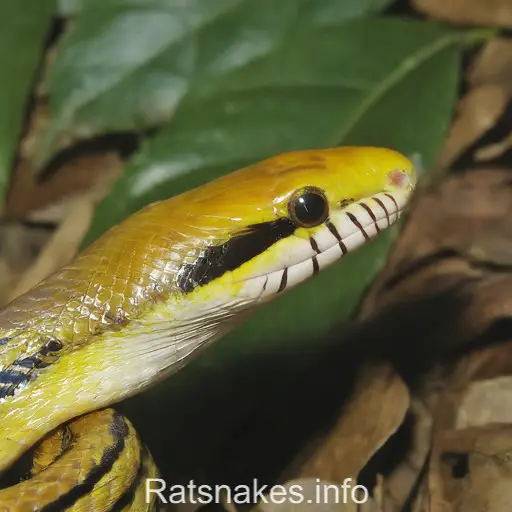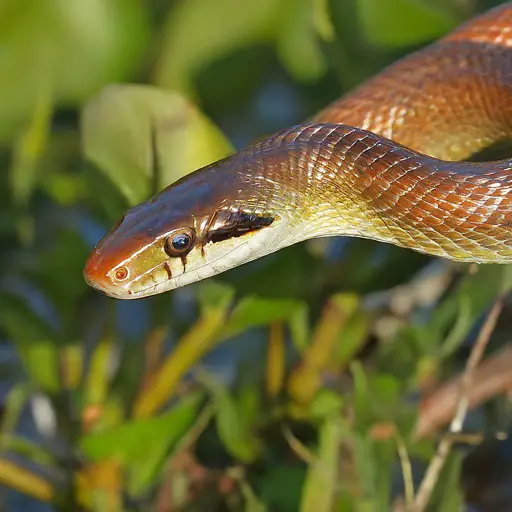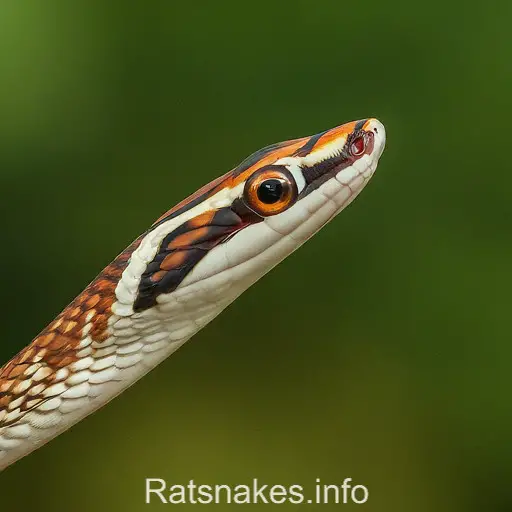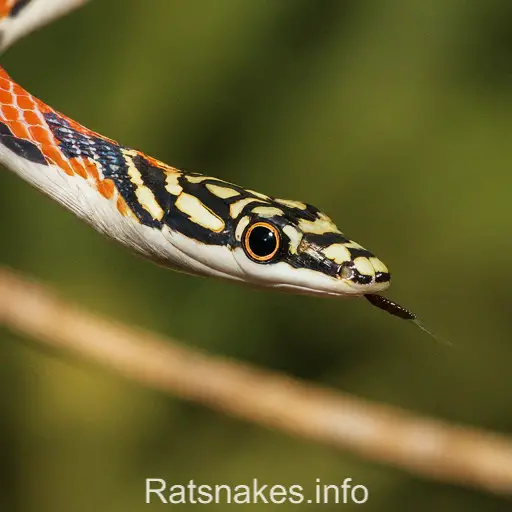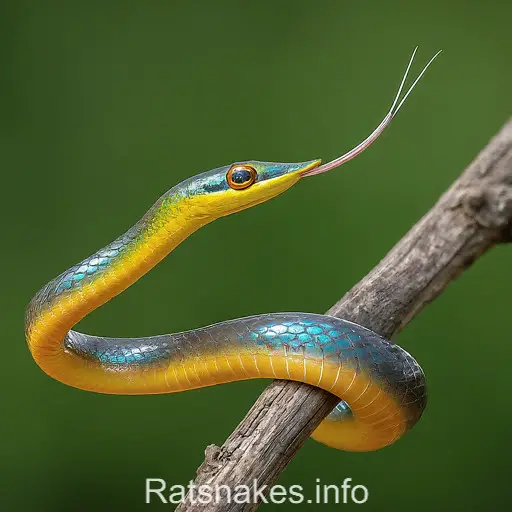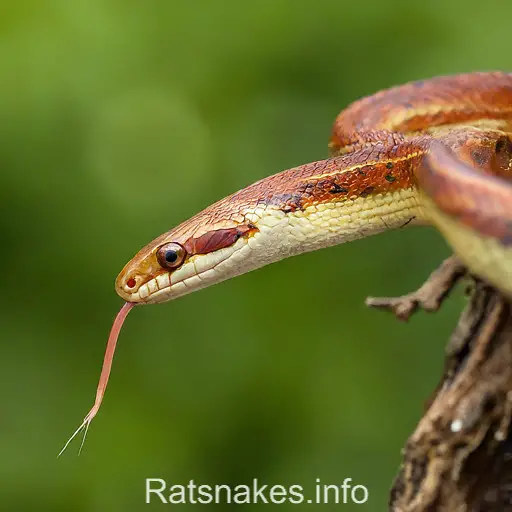
Elaphe davidi, also known as David’s rat snake, is a fascinating species that captivates both reptile enthusiasts and researchers alike. With its striking appearance and unique behaviors, this snake has earned a special place in the world of herpetology. Our journey into the world of Elaphe davidi will uncover its distinctive characteristics and shed light on its importance in the ecosystem.
As we delve deeper into the realm of Elaphe davidi, we’ll explore its natural habitat, diet, and reproduction habits. Understanding the intricacies of this species not only enriches our knowledge but also highlights the importance of conservation efforts to protect its dwindling populations. Join us on this exploration as we unravel the mysteries of Elaphe davidi and appreciate the beauty of this remarkable snake species.
Overview of Elaphe Davidi
Here’s a glimpse into the world of Elaphe davidi:
- Belonging to the Colubridae family, Elaphe davidi is a slender and non-venomous snake species native to China.
- This fascinating snake, also known as David’s rat snake, showcases a visually striking appearance with its vibrant scales and elegant patterns.
- In the realm of herpetology, Elaphe davidi holds a significant place due to its unique behaviors and characteristics.
- Known for their secretive nature, these snakes are primarily active during dusk and dawn, making them a challenge to observe in the wild.
- Elaphe davidi primarily inhabits forests, woodlands, and rocky areas, where they rely on their excellent climbing skills to hunt for prey.
- When it comes to diet, these snakes are carnivorous, feeding on a variety of small mammals, birds, and sometimes even other reptiles.
- Reproduction in Elaphe davidi typically occurs once a year, with females laying a clutch of eggs that hatch into young snakes after an incubation period.
Let’s dive deeper into the enchanting world of Elaphe davidi and unravel more about this captivating snake species.
Unique Characteristics
When it comes to Elaphe davidi, there are several unique characteristics that set this snake species apart from others. Here are some notable features that make Elaphe davidi fascinating:
- Coloration: These snakes exhibit a striking color pattern with a mix of black, yellow, and brown, creating a visually stunning appearance that helps them blend into their natural surroundings.
- Size: Adult Elaphe davidi typically reach lengths of around 3 to 5 feet, making them medium-sized snakes that strike a balance between agility and strength.
- Behavior: Known for their secretive nature, Elaphe davidi are most active during dusk and dawn, preferring to hunt under the cover of darkness. Their excellent climbing skills also make them adept at capturing prey in various habitats.
- Diet: As carnivorous creatures, these snakes feed on a diet that includes small mammals, birds, and occasionally other reptiles. Their hunting techniques are both strategic and efficient, allowing them to sustain themselves in their natural environment.
- Reproduction: Elaphe davidi reproduce annually, with females laying eggs that hatch into young snakes. This reproductive cycle plays a crucial role in sustaining the population of these fascinating creatures in their habitats.
Exploring the unique characteristics of Elaphe davidi provides valuable insights into the intricate world of this species, showcasing the remarkable adaptations that have allowed them to thrive in diverse ecosystems.
Natural Habitat
Elaphe davidi, also known as the David’s Rat Snake, is native to the rocky hillsides and woodlands of China. Their natural habitat consists of areas with moderate to high humidity levels, providing the ideal environment for these snakes to thrive. Here are some key points about the natural habitat of Elaphe davidi:
- Terrain: They are commonly found in regions with rocky outcrops and dense vegetation, offering ample hiding spots and suitable temperatures for their survival.
- Climate: The temperate climate of their habitat allows for a varied ecosystem, supporting a diverse range of prey for the snakes to feed on.
- Elevation: Elaphe davidi are known to inhabit areas at moderate elevations, preferring altitudes that offer a balanced mix of warmth and coolness.
These factors contribute to the adaptability of Elaphe davidi in their natural habitat, enabling them to effectively hunt, reproduce, and sustain their population in diverse ecosystems.
Diet and Feeding Habits
When it comes to Elaphe davidi’s diet and feeding habits, we see a fascinating aspect of their behavior. These snakes are carnivorous and primarily prey on small mammals, birds, eggs, and occasionally insects. Their hunting strategy involves ambushing their prey by patiently waiting and then striking with precision when the opportunity arises.
Elaphe davidi are skilled hunters, using their keen sense of smell and excellent eyesight to track down their next meal. They are opportunistic feeders, adapting their diet based on availability and prey size. Younger snakes tend to target smaller prey such as insects and young rodents, while adults may take down larger prey like birds and mammals.
One remarkable feature of Elaphe davidi is their ability to consume prey much larger than their own head by dislocating their jaws. This unique adaptation allows them to swallow their food whole, aiding in efficient digestion. Once they have feasted on a meal, these snakes can go for extended periods without needing to eat again, showcasing their impressive metabolic efficiency.
In the wild, Elaphe davidi play a vital role in controlling small mammal populations, thus helping maintain the ecological balance of their habitat. Understanding their diet and feeding habits sheds light on the intricate role these snakes play in their ecosystem.
Reproduction Behavior
When it comes to reproduction, Elaphe davidi typically mate in the spring, after emerging from hibernation. Males engage in combat dances to establish dominance and court females.
- Mating occurs once courtship is successful, with the female laying a clutch of eggs several weeks later.
- These eggs are then incubated for around 2 months before hatching.
- The hatchlings are independent from birth and must fend for themselves, with no parental care provided.
In terms of Reproduction Behavior, these snakes follow a seasonal pattern that ensures the survival and continuation of their species.
| Key Reproduction Facts |
|---|
| Mating Season |
| Incubation Period |
| Parental Care |
The cycle of life continues for Elaphe davidi as they play a vital role in maintaining the balance of their ecosystem.
Conservation Efforts
When it comes to Elaphe davidi, conservation efforts play a crucial role in ensuring the sustainability of this species in the wild. Here are some key points regarding the conservation of Elaphe davidi:
- Habitat Protection: Elaphe davidi is mainly found in rocky habitats and forests in certain regions of China. Preserving these natural environments through protected areas and habitat restoration projects is essential for the survival of these snakes.
- Anti-Poaching Measures: Poaching poses a significant threat to Elaphe davidi populations due to the demand for their skin and meat. Implementing strict anti-poaching laws and increasing patrols in key habitats are crucial steps in safeguarding these snakes.
- Community Education: Raising awareness among local communities about the importance of Elaphe davidi in the ecosystem can lead to greater support for conservation efforts. Educating people about the role these snakes play in maintaining a balance in nature is vital.
- Research and Monitoring: Continuous research and monitoring of Elaphe davidi populations help conservationists understand the threats they face and develop effective conservation strategies. By tracking population trends and studying their behavior, we can better protect these snakes.
- Collaboration with Authorities: Collaborating with governmental agencies, wildlife organizations, and research institutions is essential for comprehensive conservation efforts. By working together, we can pool resources and expertise to maximize the impact of conservation initiatives.
- Engagement with Stakeholders: Involving stakeholders such as local communities, landowners, and experts in Elaphe davidi conservation projects fosters a sense of ownership and responsibility towards protecting these snakes. Engaging with diverse groups ensures a holistic approach to conservation.
- Long-Term Sustainability: Ensuring the long-term sustainability of Elaphe davidi requires a combination of scientific research, community involvement, and policy advocacy. By committing to ongoing conservation efforts, we can secure a future where these snakes thrive in their natural habitats.
By focusing on these conservation measures, we can make a positive impact on the survival of Elaphe davidi and contribute to the preservation of biodiversity in the ecosystems they inhabit.
Key Takeaways
- Elaphe davidi, also known as David’s rat snake, is a non-venomous snake native to China, exhibiting striking coloration and active behavior during dusk and dawn.
- These snakes inhabit forests, woodlands, and rocky areas, displaying excellent climbing skills and a carnivorous diet consisting of small mammals, birds, and other reptiles.
- Reproduction in Elaphe davidi occurs annually with females laying eggs that hatch into young snakes after an incubation period.
- The natural habitat of Elaphe davidi includes rocky hillsides and woodlands in China, with a moderate to high humidity climate supporting their survival.
- Conservation efforts for Elaphe davidi involve habitat protection, anti-poaching measures, community education, research, collaboration with authorities, and stakeholder engagement to ensure long-term sustainability.
Conclusion
Safeguarding the survival of Elaphe davidi in the wild is crucial for biodiversity preservation. By implementing conservation efforts such as habitat protection, anti-poaching measures, community education, research, and collaboration, we can ensure the long-term sustainability of this species. Our collective actions play a vital role in maintaining the delicate balance of ecosystems where Elaphe davidi thrives. Let’s continue to work together to protect these magnificent snakes and contribute to the preservation of our natural world.

